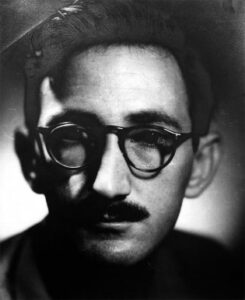Cundo Bermudez

Cundo Bermúdez. Renowned Cuban painter, called the last master of the second generation of the Cuban avant-garde of the 20th century. Secundino Bermúdez y Delgado was born in the Jesús del Monte neighborhood, in Havana, on September 3, 1914. At the age of 13 (in 1930) he began his high school studies and shortly after attended the Academy of Fine Arts, which he left. without finishing studies. In 1934 he began studying Diplomatic Law at the University, but the closure of the Institution would only allow him to graduate in
1941. In 1937 he exhibited for the first time in several group exhibitions in Havana: at the Lyceum, at the Dependents Center and at Albear Park. In 1938, he participated with an Antillean Maternity in the II National Exhibition of Painting and Sculpture, Castillo de la Fuerza, Havana.
In that same year he traveled to Mexico, where he studied with Rodríguez Lozano, became enthusiastic about the painting of the muralists and met that of the young Rufino Tamayo. Contact with modern art and popular art from that country will be decisive in his artistic maturation. Returning to Cuba, he interprets his surroundings with a new vision, already trained in modernity, and creates daring works that combine the wisdom of popular painting of inns and cantinas with the universal tradition of the primitives. His color becomes more intense and personal, with bold
combinations of opposites, taken to the maximum violence of it. His first formal individual exhibition, of watercolors and gouaches, was at the Lyceum of Havana, in 1942. His emergence on the international level was in 1944, when the Museum of Modern Art in New York presented three representatives of the avant-garde. initial, Amelia Peláez, Fidelio Ponce and Carlos Enríquez, and two young people who quickly showed their talent: one was Mario Carreño, the other was him. Occasional landscape painter, painter of still lifes or portraits, of musicians or acrobats, what defines his best paintings are the scenes taken from the Cuban environment and the domestic interiors that, in a process of sublimation, have been refined until they become mythical spaces. . Cundo collaborated on several integration initiatives between arts and architecture: mural for the Havana Hilton (1958), panels for a bar at the Habana Riviera (1958), The Three Antilles, in the Caribe building in San Juan, Puerto Rico ( 1969), mural in
OAS headquarters, Washington (1984). After several trips to the United States and Haiti he traveled to the old continent, in the early 50s, he went to Europe to see the museums, he spent nine
months in Spain, Italy and France. In 1962 he requested to leave the country, residing first in Washington and later in San Juan, Puerto Rico, where he lived for almost three decades.
In 1996 he settled in Miami. He dies on October 30, 2008 at the age of 94.
Awards and honours
He has had international recognition, two works of his authorship belong to the collection of the Museum of Modern Art in New York. In 1956 he won the Prize at the International Caribbean Exposition, sponsored by the Museum of Fine Arts of Houston, Texas. In 1973
He was awarded at the Tribute to Picasso exhibition, held in Washington.